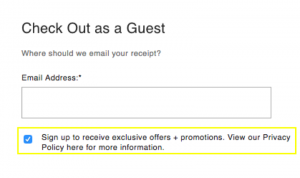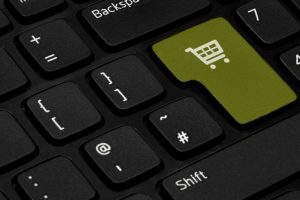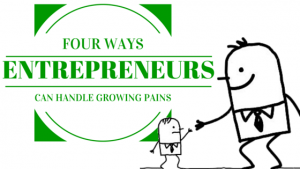As brand safety continues to take center stage in the digital ad industry, contributor Mark Williams discusses the technologies and solutions you need to decrease risk and protect your brand.

Photo © Bloomicon / Shutterstock.com
So your ad drove a million views — cool. Now, did all those views take place in a brand-safe environment? Did the video play before an extremist video? What appeared after the ad played?
These are the questions brands are finally asking themselves following the Google and YouTube controversy. And, as “Brand Safety” has emerged as the new buzzword and mission at hand, brands are also asking themselves, now what?
Until recently, media buying was focused more on reach and less on influence. After the recent discoveries of branded content on extremist videos and pages, brands and agencies were reminded that haphazard media buying can be unpredictable and detrimental to the brand as a whole.
At the end of the day, YouTube is a platform through which third-party agencies and companies buy and sell ad inventory. And it’s not the only platform brands have to carefully consider — Facebook has experienced its own inappropriate content challenges as well (to the tune of 3,000 new community operation hires), while Snap has thrown its hat into the proverbial digital ad ring.
As user-generated content outpaces traditional media in both quantity and speed, businesses have less control over their brands than ever before.
Pulling millions of dollars of digital campaigns off YouTube or any other platform will not prevent incidents from happening in the future. But with digital ad spend jumping 22 percent last year and only anticipated to increase this year, marketers are paying closer attention to where their ads go and who they influence.
While not every nuance of brand perception can be controlled, brand safety is more controllable than brands realize — at least to the ones investing in qualified people and technology to support their digital ad campaigns. Brand safety will fluctuate — but you can focus on key areas and set precautions in place to minimize risk and stay ahead of the game.
Prioritize influence over reach
Previously, brands were much more concerned with who viewed their ads (gender, age, interests). Now, they are finally questioning the environments in which their ads are viewed. But digital advertising introduced brands to a whole new meaning of reach and influence –– a world in which algorithms help brands distribute content to millions of people across hundreds of properties.
News flash: Reach does not guarantee positive influence.
One of the most popular solutions media buyers have relied on has been using blacklists to dodge problematic sites and whitelists to stick to what they know is safe. But black or white — lists alone aren’t going to cut it for a complex and evolving issue like brand safety.
While blacklisting and whitelisting are a good start, they’re not a full solution that can keep up with the pace of user-generated content.
Incorporate ma(n)chines — and (wo)ma(n)chines, too!
To buy the most effective and on-brand inventory, it is important that marketers put their money where their mouths are — they need to invest in humans, not just technology, to place their ads.
A hand-curated targeting list is the best way to approach media buying and guarantee brand safety. Computers and artificial intelligence won’t pick up on slang or subtext, so they may place your ad on a video or web page that is not aligned with your brand.
At the same time, the challenge with a completely manual approach is scale. Advertisers need to find the perfect balance of manual and technological targeting tools to ensure brand safety online.
Computers and video recognition aren’t perfect, but the combination of machine learning and human labor is the only way to continue to improve targeting. It’s impossible for current filters and recognition software to guarantee brand safety 100 percent, but as the necessary attention is given to this challenge, AI should get us to 99.9 percent accuracy.
We’ll also be better positioned to keep up with the amount of content churned out — after all, more than 400 hours of video are uploaded to YouTube every minute, according to Google.
Use more than one tool
When selecting the right tools, don’t just rely on one type. An industry filter is not the be-all and end-all of tools. And it’s not going to clean everything up — you need a combination of analytics, language processing and image recognition to review all the content out there.
Especially given the flood of videos created, a filter can assess headlines, texts and descriptions, but not images. Image recognition and language processing tools have enhanced these filters further for more comprehensive flagging of inappropriate content.
And don’t just limit yourself to the tools that are currently available — think outside the box and examine the analytics for any patterns. Analysts on our team have found a correlation between the ratio of dislikes to likes and the likelihood of taboo content.
When applied, this approach offers significant results. As part of its recent brand safety efforts, a GroupM client on-boarded a suite of tools to better detect inappropriate images and language across the hundreds of channels it was advertising on. (Disclosure: GroupM partnered with Fullscreen, my employer, to form an influencer marketing joint venture.)
The client has implemented these tools with much success — cutting down its initial target list by nearly 20 percent to remove unsafe content thoroughly and quickly across categories.
Natural Language Processing flagged and excluded 75 channels associated with vulgar language, while Negative Keyword lists blocked 47 channels due to terms specifically around violence. The OpenSlate Brand Safety filter removed 65 channels featuring death/tragedy, sexually suggestive and gross/bizarre content.
Rather than pointing their fingers at these platforms, brands need to be more concerned with proactive solutions that prevent their ads from showing up on off-brand content. While controversies on YouTube may have ignited this issue, they’ve raised awareness around the consequences of under-researched and non-strategic ad buying.
Having the right strategy, technology and team in place to react and adjust accordingly will better position your brand to react to each platform’s nuances and ensure the most effective reach.
It may take a while before platforms refine their technology to make sure ads don’t run alongside inappropriate content. Start investing in your targeting approach before your content even hits the net.
Some opinions expressed in this article may be those of a guest author and not necessarily Marketing Land. Staff authors are listed here.
Marketing Land – Internet Marketing News, Strategies & Tips
(35)










